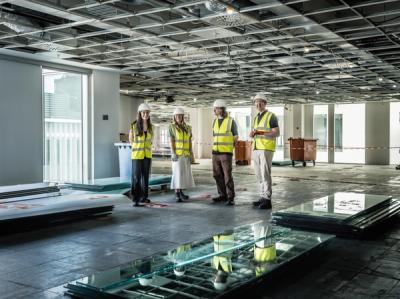For me, the transition to regenerative design requires systems thinking and a willingness to try new things. We have to learn from our mistakes, remain optimistic and celebrate the wins.
The first step is to just do one thing differently. For years, it was ‘can we reuse the ceiling tiles?’ What we’re seeing now is these small moves beginning to snowball, paving the way for success on a much larger scale. Doing that one thing differently was the starting point for far more significant change.
In smaller practices, it’s wise to start small. At Orms we spent one hour every month thinking about what sustainability meant for our practice. We used that time to identify areas in which we might have potential impact – and for us, it was always reuse.
You have to have a sense of optimism, otherwise you wouldn’t get out of bed in the morning. Trust me, we all have those days. But staying positive means celebrating the wins, shrugging off the losses and saying “how can we learn from this for next time?”.
There’s a preconception that regenerative buildings feel ‘recycled’. When people visit our office I often ask if they can spot the reuse. They never can. It’s polished, it’s high-end, and the chairs are 35 years old!
I don’t think we’re going to change the world by fighting the businesses that already exist. We need to hold their hands and help them evolve their business models into a circular approach. As an architecture studio, this means we’ll continue to get their support in traditional ways, but get offered a different product, a reused product.
Systems thinking is inherent within regenerative design. We have to understand the systems within which we operate and find the leverage points where we can tip those systems to for our collective benefit.
At Orms our current passion project is stone. We see so much stone waste, particularly in interiors. We’re starting by understanding the supply chain and finding collaborators. Who can the stone be returned to? Who can stock it once it’s repaired?
The next few years will be about learning, trying something differently and then trying again. I joined Orms eight years ago and moved into a full-time sustainability role in 2020. We have so much momentum now. I feel like we are on the cusp of major change.
[This article first appeared in Architecture Today’s Reinventing Practice series.]
